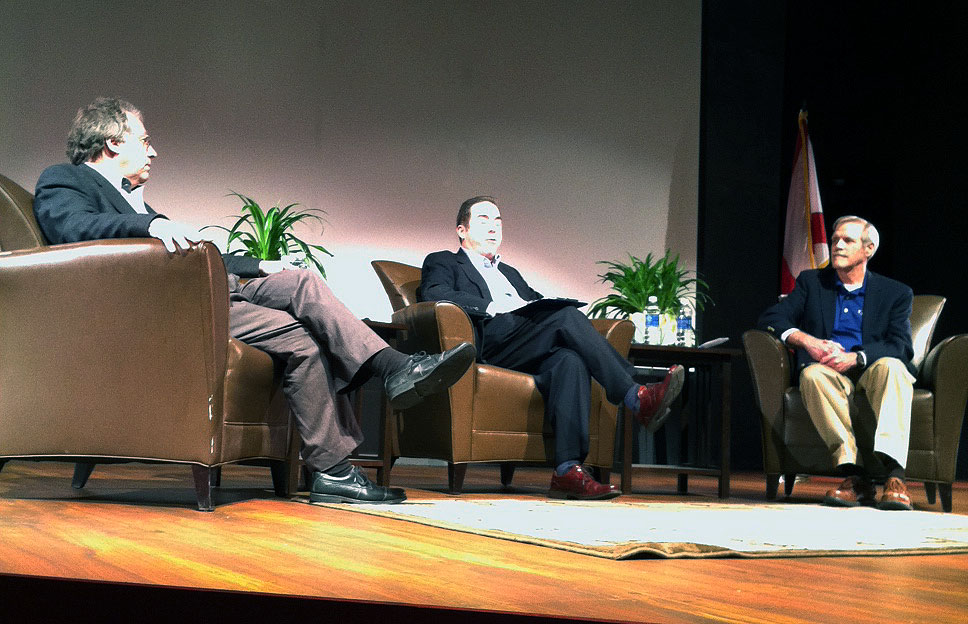“A Conversation on Climate Change” was held in the UAH Chan Auditorium last evening in front of a standing room only audience. UAH professor John Christy (aka “my boss”) and Prof. Kerry Emanuel (MIT) answered questions posed by the moderator, noted economist Russ Roberts. The event was hosted by the UAH College of Business Administration.
The discussion focused on how much the world has warmed, whether severe weather has gotten worse, how much consensus exists in the climate community, and what should be done about the problem.
John Christy emphasized that all of the 100+ climate models have over-predicted warming in the tropical troposphere, by at least a factor of 2, and this was supposed to be the most obvious manifestation of global warming as predicted by climate models.
Kerry Emanuel emphasized the strong consensus in the climate community that adding CO2 to the atmosphere will cause warming, that the details of that warming remains uncertain (much of the heating has gone into the ocean), and that at least the possibility of catastrophic climate change compels us to act through energy policy.
Christy’s view was that we have the moral obligation to allow access to inexpensive energy by the world’s poor, a view which Emanuel also supported.
The “debate” was very well received by the audience. It will appear in a week or two as an EconTalk podcast, part of a series that Russ Roberts hosts.

 Home/Blog
Home/Blog




